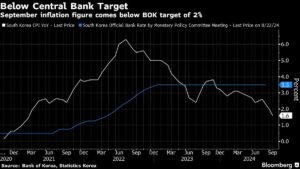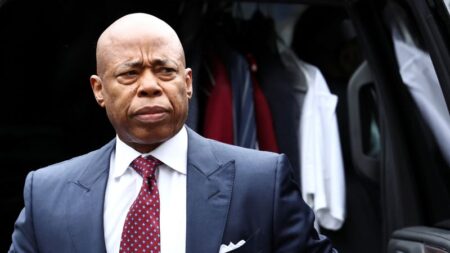Last month, the Federal Reserve slashed interest rates by a supersized half point in a bid to maintain the job market’s strength, Chair Jerome Powell explained in a news conference after the decision was announced.
But when fresh data this Friday showed the job market is more robust than even the Fed chair thought, some analysts saw it as an opportunity to engage in what Philipp Carlsson-Szlezak, Boston Consulting Group’s chief economist, called “everyone’s favorite pastime:” bashing the Fed.
“Did the Fed even need to cut rates in September, let alone cut by 50bps (basis points)?” Seema Shah, chief global strategist at Principal Asset Management, wrote in a note on Friday. James Knightley, chief international economist at ING, said in a statement: “The Fed should be hiking rates with these sorts of figures, not cutting rates.”
Even before the Fed’s September rate cut, some investors criticized the central bank for not cutting at its July policy meeting and said officials were behind the curve. Powell defended the decision at the news conference, saying the Fed is not playing catch-up.
Second-guessing the Fed isn’t new, of course. Central bank officials themselves note the uncertainty inherent in their work, especially when the economy reaches inflection points. But trying to make sense of that uncertainty is all part of their work.
There also isn’t ever a singular view of the economy’s health and its direction. Economists don’t always agree, so of course, the Fed will always be subject to some criticism.
Even Fed officials don’t always agree with the central bank’s actions, such as Fed Governor Michelle Bowman, the lone dissenter to the Fed’s decision to cut rates by half a point in September. She preferred to cut by a quarter point, explaining in a statement that “the committee’s larger policy action could be interpreted as a premature declaration of victory on our price stability mandate.”
Without a willingness to follow the data, even if in unexpected directions, Fed officials wouldn’t be able to adapt to surprises — like a jobs report that blows past everyone’s expectations.
Fed officials aren’t shy about admitting that they don’t always have confidence in how the US economy will evolve. In fact, a common phrase in their interest-rate statements reads: “the economic outlook is uncertain.” Translation: We’re not exactly sure what will happen, but here’s our best guess.
That’s not to discount the complex economic forecasts that analysts and the hundreds of researchers at the Fed conjure up based on robust government data, and, in some cases, real-time figures from private companies.
But economics is not a hard science. It’s a massive, complex web of decisions people make with their money.
“This isn’t exact science, even if some people sometimes pretend it’s that way,” Carlsson-Szlezak said. “The Fed is doing all this by looking in the rear-view mirror because all the data are describing the past, and you got people shouting at you from Wall Street, you got people shouting at you from Washington, and you got the press shouting at you that you’re stupid.”
He said there’s a “tendency in our public discourse” to “pick things apart and still spin it into something that’s terrible.”
But for now, with inflation nearing the Fed’s 2% target and the job market still notching strong gains, the optimists seem to be having a moment.
“I’m more bullish today than I was yesterday—and I was a bull then,” Gina Bolvin, president of Bolvin Wealth Management Group, wrote in a note Friday.
Read the full article here
















